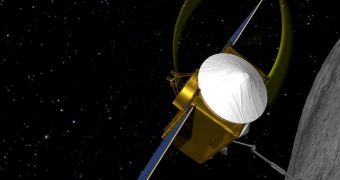As the United States prepares to conduct its first sample-return mission to a near-Earth asteroid over the coming decades, NASA is beginning to lay down the groundwork needed to conduct the challenging mission. The agency is now conducting a months-long survey of the target asteroid.
Officials with NASA explain that the Origins-Spectral Interpretation-Resource Identification-Security-Regolith Explorer (OSIRIS-REx) spacecraft will most likely launch towards its target, asteroid 1999 RQ36, in 2020, with a sample-return data scheduled for sometime in 2013.
One of the reasons why conducting such a mission is very complex is largely the lack of international or national expertise in this type of space exploration. Thus far, only the Japan Aerospace Exploration Agency (JAXA) managed to conduct such a flight. The JAXA Hayabusa probe returned home in 2010.
The reason why 1999 RQ36 was selected as a target for OSIRIS-REx is that the space rock tends to pass very close to our planet once every 6 years. In fact, astronomers believe that there is a 1-in-1,000 chance that it will collide with our planet in the year 2182.
At this point, the object is heading towards its point of closest approach to Earth, and NASA experts plan to analyze it from all angles, with all instruments they can spare. This will allow mission planners handling OSIRIS-REx to design the spacecraft so that it has the highest odds of success.
The 1,837-foot (560-meter) wide asteroid is sufficiently large to allow the NASA probe a smooth landing. However, astronomers need to figure out the characteristics of 1999RQ36's spin and movements, so that the spacecraft is not destroyed, Space reports.
The main rationale behind this mission is that geologists and astronomers want to gain a better understanding of the way the solar system formed and evolved, especially in its earliest days. The studies may also reveal how life here on Earth began.
“We lucked out in that not only is this an asteroid that's relatively easy to get to, it is extremely interesting, exactly the kind of object that we want for this mission,” OSIRIS-Rex asteroid astronomy working group leader Carl Hergenrother says. He is based at the University of Arizona.
If this probe is successful, then we could expect to see other sample-return missions being put on queue. However, NASA has orders to put astronauts on a near-Earth asteroid by 2025, so any potential robotic missions will take place after that objective is completed.

 14 DAY TRIAL //
14 DAY TRIAL //